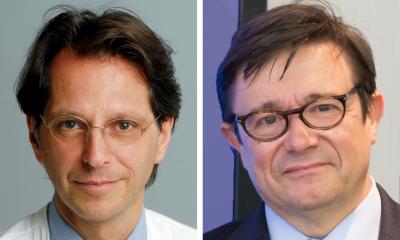Skin Cancer
The Netherlands' first user of Elekta's Esteya Electronic Brachytherapy
On March 3, Radiotherapy Group clinicians at Ziekenhuis Gelderse Vallei (Ede, the Netherlands) used their Esteya electronic brachytherapy system for the first time to treat a 73-year-old male patient with a nodular basal cell carcinoma on his nose. Esteya is a form of high dose rate (HDR) brachytherapy that applies high-precision radiotherapy directly to the cancer site, minimizing radiation to surrounding healthy tissues. On March 16, the Netherland's Radiotherapy Group (Radiotherapiegroep) followed up this first use of Esteya at one of its locations in Ziekenhuis Gelderse Vallei by treating five additional patients with six lesions - five on the nose and one on the leg.

"This first patient had previous surgery for skin cancer on his shoulder that had left a visible scar and his brother had undergone surgery for skin cancer on his nose, so he knew what the outcome might be with surgery," says Ronald Keus, MD, a staff radiation oncologist with the Radiotherapy Group. "He declined surgery and opted for Esteya electronic brachytherapy because he knew the treatment should provide much better cosmetic results."
Besides cosmetic concerns, most other candidates for Esteya are selected due to contraindications for surgery, including the use of therapeutic anticoagulants and cardiac risks, he adds.
Esteya adds an attractive treatment alternative for Radiotherapy Group, which for decades has been using linear accelerator-based treatment for skin cancer patients. "Esteya is especially suitable for smaller, superficial lesions," Dr. Keus says. "With electron treatments on a linear accelerator, the beam can be too deep and large to avoid exposing healthy tissues. With a sharper dose fall-off, Esteya enables us to treat lesions up to a few centimeters in size at a depth down to five millimeters. In addition, for all Esteya patients the treatment schedule is just six visits [6 X 7 Gy], two fractions per week for just a few minutes per treatment. The conventional radiotherapy course would be 20 separate visits."
The Esteya treatment set up and the therapy itself has been appealing to patients. "The therapy is staged in a small room with a comfortable chair and patients tell us that the treatment is quick and painless without much hassle at all," he adds. "From an operational standpoint, treating with Esteya requires less staff and it's a dedicated machine that is cost-effective to operate."
With a second Esteya system set to begin treating patients in Radiotherapy Group's center in Deventer in about eight weeks, Dr. Keus predicts they will reach a treatment volume of at least 60 patients each year.
To spur interest in Esteya, Radiotherapy Group organized a symposium to introduce Esteya for 20-30 dermatologists in the area on Monday, March 21. "Esteya electronic brachytherapy is a simple and elegant treatment that provides good local control and good cosmesis for small skin cancer lesions," he says. "We are happy to be able to offer our patients this alternative approach. We hope the symposium on Esteya convinces the dermatologists in our regional neighboring hospitals to offer this option to the large numbers of patients they see."
Source: Elekta
23.03.2016











